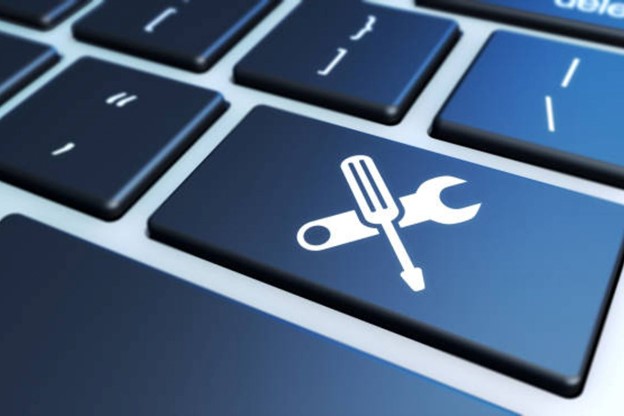What is Real-time Alert Software and What is Its Future?
In today’s fast-paced world, staying informed and responsive to critical events is paramount for businesses and organizations across various sectors. Real-time alert software has emerged as a vital tool in this regard, enabling users to receive instant notifications about important events, anomalies, or opportunities. Whether it’s monitoring cybersecurity threats, tracking market fluctuations, or managing operational processes, real-time alert software plays a crucial role in ensuring timely decision-making and proactive responses.
Understanding the Importance of Real-time Alerts
Real-time alerts empower individuals and organizations to stay ahead of the curve by providing timely information and insights. By receiving immediate notifications about significant events or changes in data metrics, users can take prompt actions to mitigate risks, capitalize on opportunities, or address emerging issues. This proactive approach not only enhances operational efficiency but also minimizes the impact of potential disruptions or losses. According to the representative of such software DeskAlerts, in some cases and in some cases the software can even save lives. Let’s have a closer look at this type of software, is it really so important for companies?
Key Features of Real-time Alert Software
Real-time alert software offers a range of features designed to meet the diverse needs of users. Some of the key features include:
- Instant Notification. Real-time alert software delivers notifications instantly, ensuring that users are promptly informed about critical events or deviations from predefined thresholds.
- Customizable Alerts. Users can customize alerts based on their specific requirements, including the type of event, severity level, and preferred notification channels.
- Integration Capabilities. Many real-time alert systems offer seamless integration with other software applications and data sources, enabling users to consolidate information and streamline workflows.
- Data Analysis. Advanced real-time alert software often includes analytical capabilities, allowing users to gain deeper insights from the data and identify trends or patterns that may require attention.
Industries Benefiting from Real-time Alert Software
Real-time alert software finds applications across various industries, including:
- Financial Services
- Healthcare
- Information Technology
- Manufacturing
- Retail
- Transportation and Logistics
How Real-time Alert Software Works
Real-time alert software monitors designated data sources or systems in real-time, continuously analyzing incoming data for predefined triggers or conditions. When a relevant event or anomaly is detected, the software generates an alert and delivers it to the designated recipients via email, SMS, mobile app notifications, or other communication channels.
Choosing the Right Real-time Alert Software
When selecting a real-time alert software solution, it’s essential to consider the following factors:
- Scalability. The software should be able to scale according to the evolving needs and growth of the organization.
- Customization Options. Flexible alert customization options allow users to tailor notifications to their specific requirements and preferences.
- Integration Compatibility. Compatibility with existing systems and software applications ensures smooth integration and data interoperability.
- User-Friendly Interface. An intuitive and user-friendly interface makes it easier for users to configure alerts, interpret data, and take appropriate actions.
Implementation of Real-time Alert Software
The implementation process involves several steps, including:
- Assessing the organization’s requirements and objectives
- Selecting the appropriate software solution
- Configuring alerts and integration settings
- Training users on the software’s features and functionalities
- Monitoring and optimizing alert performance over time
Challenges and Solutions in Implementing Real-time Alert Software
While real-time alert software offers numerous benefits, its implementation may pose certain challenges, such as:
- Integration complexity with legacy systems
- Alert fatigue due to excessive or irrelevant notifications
- Data privacy and security concerns
Addressing these challenges requires careful planning, stakeholder engagement, and ongoing optimization of alert settings and workflows.
Future Trends in Real-time Alert Software
The landscape of real-time alert software is continuously evolving, driven by advancements in technology, changing user needs, and emerging market trends. Looking ahead, several key trends are expected to shape the future of real-time alert software:
- Integration of Artificial Intelligence (AI) and Machine Learning (ML)
One of the most significant trends in the future of real-time alert software is the increasing integration of artificial intelligence and machine learning technologies. AI and ML algorithms can enhance the capabilities of real-time alert systems by enabling them to learn from historical data, identify complex patterns, and make predictive insights. This allows for more accurate alerting, proactive risk management, and predictive maintenance.
- Predictive Analytics for Proactive Alerting
With the advancement of predictive analytics techniques, real-time alert software will move beyond reactive alerting to proactive alerting. By analyzing historical data and identifying trends, real-time alert systems can anticipate potential issues or opportunities before they occur and proactively alert users. This proactive approach enables organizations to take preventive actions, optimize operations, and capitalize on emerging trends.
- Contextual Awareness and Personalization
Future real-time alert software will focus on providing contextual awareness and personalization to users. By understanding the context surrounding an event or anomaly, real-time alert systems can deliver more relevant and actionable alerts tailored to individual user preferences and roles. This contextualization enhances the effectiveness of alerts, reduces alert fatigue, and improves decision-making.
- Real-time Visualization and Interactive Dashboards
Visualizing real-time data and alerts through interactive dashboards will become increasingly important in the future. Real-time alert software will offer intuitive and customizable dashboards that allow users to visualize alert data in real-time, drill down into specific events, and gain deeper insights. These interactive dashboards enable users to monitor key metrics, track performance, and make data-driven decisions more effectively.
- Cloud-based and Edge Computing Solutions
The adoption of cloud-based and edge computing solutions will continue to rise in the future of real-time alert software. Cloud-based platforms offer scalability, flexibility, and accessibility, allowing organizations to deploy and manage real-time alert systems more efficiently. Edge computing enables processing and analysis of data closer to the source, reducing latency and enabling faster response times for real-time alerts in distributed environments.
- Enhanced Security and Privacy Measures
As data privacy regulations become more stringent and cybersecurity threats continue to evolve, future real-time alert software will place greater emphasis on security and privacy measures. This includes implementing robust encryption, access controls, and data anonymization techniques to protect sensitive information and ensure compliance with regulatory requirements.
- Seamless Integration with IoT and Sensor Networks
With the proliferation of Internet of Things (IoT) devices and sensor networks, real-time alert software will seamlessly integrate with these technologies to monitor and analyze a wide range of data sources. This integration enables organizations to harness the wealth of data generated by IoT devices for real-time monitoring, predictive maintenance, and optimization of operational processes.
By embracing these future trends, real-time alert software will continue to evolve as a critical tool for organizations seeking to stay ahead of the curve, mitigate risks, and capitalize on opportunities in today’s fast-paced and data-driven world.
Conclusion
Real-time alert software has become an indispensable tool for organizations seeking to stay ahead in today’s dynamic and competitive landscape. By providing instant notifications, customizable alerts, and actionable insights, these systems empower users to make informed decisions and respond effectively to changing circumstances. As technology continues to evolve, the role of real-time alert software will only become more critical in enabling agility, resilience, and strategic advantage.



